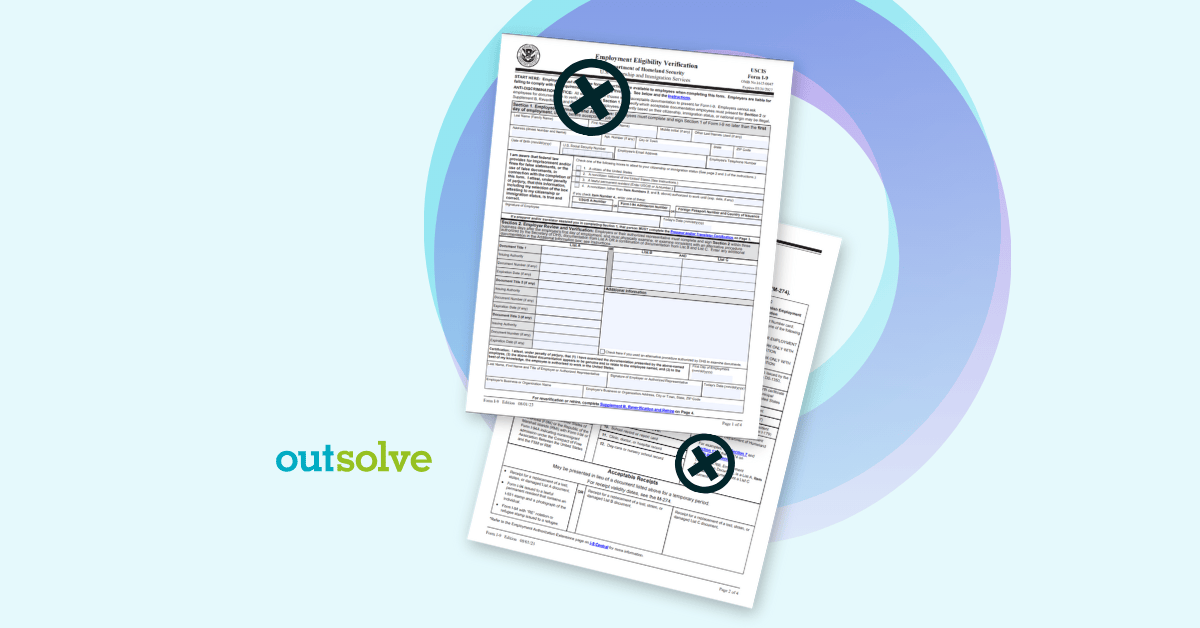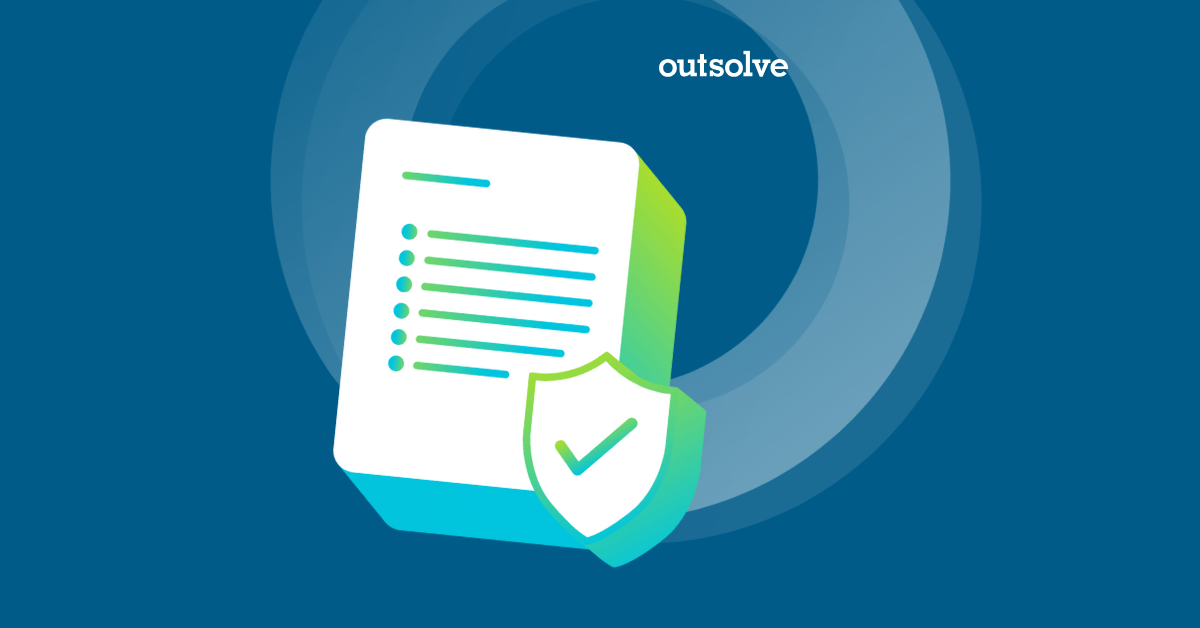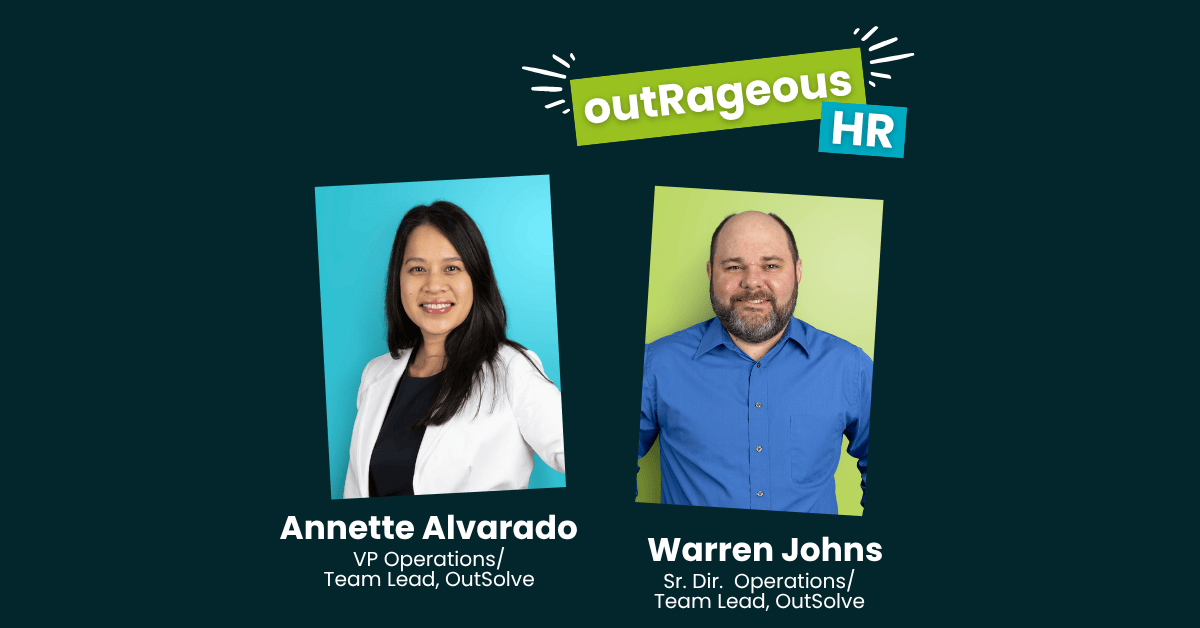4 min read
Legal Series: Penalties for Form I-9 Violations: What’s at Stake in 2025
![]() OutSolve
:
Jul 16, 2025 11:46:29 AM
OutSolve
:
Jul 16, 2025 11:46:29 AM

This article is part of an ongoing legal series designed to provide insight and practical guidance on current and emerging workplace compliance issues. These insights shared by lawyers are based on their interpretation of existing regulations and proposed changes, and intended for informational purposes, not to be regarded as legal advice.
The 2025 Trump administration has made immigration enforcement a top priority. Part of that enforcement includes increasing the frequency of Form I-9 audits, significantly raising the chances that a business will be targeted. Naturally, increased enforcement means increased chances for Form I-9 penalties, which include fines and, in severe cases, potential imprisonment. Maintaining Form I-9 compliance is the key to avoiding costly penalties. OutSolve can support your efforts with internal audit services and up-to-date resources to help you meet and maintain your I-9 obligations with confidence.
What Are Your I-9 Obligations?
U.S. law prohibits businesses from employing individuals who are not authorized to work. To comply with federal regulations, employers must:
- Complete Form I-9, Employment Eligibility Verification, for every new hire;
- Retain a completed Form I-9 for each current employee;
- Keep I-9 records for former employees for at least three years after the date of hire or one year after employment ends—whichever is later.
Employers are also responsible for verifying the authenticity of the documents presented and ensuring they relate to the employee. To streamline this process and confirm work authorization, companies may use the E-Verify system, a voluntary (and in some cases mandatory) online tool provided by the Department of Homeland Security.
How Does I-9 Enforcement Work?
The government enforces I-9 requirements through audits, which begin when Officials from the Department of Homeland Security, the Immigrant and Employee Rights Section (IER) at the Department of Justice, or from the Department of Labor indicate an intent to inspect an employer’s Form I-9 documentation. The employer must provide the requested documents typically within three days.
What Are I-9 Violations?
Following an audit, the government will notify the employer of any identified Form I-9 violations. These violations generally fall into three categories:
- Technical Violations – Minor errors that do not affect an employee’s work authorization status.
- Procedural Violations – Mistakes related to the completion or handling of the I-9 form.
- Substantive Violations – Serious issues, such as failing to verify employment eligibility or employing unauthorized workers.
Employers are given at least 10 business days to correct technical or procedural violations. If not corrected within that time frame, these may be reclassified as substantive violations, which can result in fines or other penalties.
Employers violate the law by:
- Knowingly hiring unauthorized workers,
- Continuing to employ unauthorized workers after learning they lack work authorization,
- Helping unauthorized workers commit document fraud,
- Employing or recruiting unauthorized workers for a fee, or
- Referring unauthorized workers to others for a fee.
- These violations typically lead to more serious penalties.
What Are the Penalties for I-9 Violations?
If the government concludes the employer committed a violation, it may impose penalties. Those penalties include fines and, in severe cases, criminal penalties.
The government may also order businesses to stop employing unauthorized workers. Failing to follow such an order can lead to contempt of court proceedings, additional audits, and more severe penalties.
Fines for I-9 Violations
Generally, fines are the most common I-9 penalty. The government may fine you for each person knowingly employed without work authorization, as follows:
- For a first offense, between $716 and $5,724;
- For a second offense, between $5,724 and $14,308; and
- For third or subsequent offenses, between $8,586 and $28,619.
For substantive violations, the government determines the amount of an I-9 fine based on the size of the business, how severe the violation is, and whether the employer demonstrated a good-faith belief that it followed the law, hired undocumented individuals, or previously violated Form I-9 requirements.
Criminal Penalties
The government may impose criminal penalties if you commit certain violations so frequently that you have engaged in a pattern or practice of Form I-9 violations. While most penalties apply to the business entity, criminal penalties as a punishment for hiring illegal immigrants can apply to the individuals running the business, too. Specifically, those violations include knowingly hiring or continuing to employ unauthorized workers and requiring fees in the recruitment process.
The government may fine individuals and entities involved in a pattern or practice of violations up to $3,000 per unauthorized worker. It can also order individuals involved in creating the pattern or practice to be imprisoned for up to six months.
Avoiding Penalties for Form I-9 Violations
Form I-9 penalties can escalate quickly—and in severe cases, may even extend to individuals in leadership roles. The best defense is a proactive approach to compliance. That starts with a clear understanding of:- Your legal responsibilities as an employer
- Which individuals are authorized to work in the U.S.
- What valid documentation looks like
Conducting a thorough internal I-9 audit is one of the most effective ways to identify and correct errors before they lead to costly consequences.
Who Has Work Authorization?
Who Has Work Authorization in the U.S.?
U.S. citizens and lawful permanent residents (green card holders) are automatically authorized to work. However, not all noncitizens have this authorization. Those who may not be authorized to work include:
- Individuals on temporary visas that do not permit employment (e.g., tourist or student visas without work authorization);
- Undocumented immigrants, sometimes referred to as “unauthorized” or “illegal” immigrants;
- Individuals with expired visas or lapsed immigration status;
- Applicants for immigration benefits who may qualify for work authorization but have not yet received it.
Some individuals—such as asylum seekers or those with pending applications for Temporary Protected Status (TPS) or Deferred Action—may be in the process of obtaining work authorization but are not yet eligible to work until they receive an Employment Authorization Document (EAD).
What Does Work Authorization Look Like?
The Lists of Acceptable Documents maintained by USCIS provides a list of documents for employees to provide to prove their work authorization and identity. Generally, to prove identity, the document must be issued by a government entity and include a color photograph of the person.
Documents are divided into:
- List A—documents that prove identity and work authorization, such as U.S. passports, I-551 Cards, and Employment Authorization Documents (EADs);
- List B—documents that prove identity only, such as driver’s licenses; and
- List C—documents that prove work authorization only, such as U.S. social security cards or birth certificates.
Some of these documents may still be valid even if they have expired. For example, due to government processing delays, EADs often expire before the employee receives a new card.
To address its own delays, the government issued a regulation extending the validity of many EADs for 540 days, despite the printed expiration, so long as they applied for renewal on time.
Internal I-9 Audits
An internal I-9 audit can help you identify and correct issues before the government selects you for an audit. Start by:
- Creating a list of all current employees and all former employees who worked for you within the previous three years,
- Verifying that you have a From I-9 for each of those employees, and
- Cross-checking each form with the employee’s identification documents.
Resources are available to help you complete this process and to guide you through what to do if you discover issues.
Getting I-9 Compliant
Since you don’t have to file Form I-9s with the government, it can be easy for leadership to deprioritize related compliance. However, the penalties for noncompliance can be significant. With the current administration’s focus on immigration enforcement, now is the time to address any Form I-9 issues. Outsolve offers resources to help you ensure your business is compliant, including help with organization and verification. Reach out to learn more.
Founded in 1998, OutSolve has evolved into a premier compliance-driven HR advisory firm, leveraging deep expertise to simplify complex regulatory landscapes for businesses of all sizes. With a comprehensive suite of solutions encompassing HR compliance, workforce analytics, and risk mitigation consulting, OutSolve empowers organizations to navigate the intricate world of employment regulations with confidence.
Weekly OutLook
Featured Posts

The Federal Government Shutdown Lingers: HR Professionals Take Action

HR Planning: 5 Planning Steps for Q4
Related Posts

Federal Contractor Compliance: What HR Teams Need to Budget For in 2026
2026 is quickly approaching, and HR professionals working in federal contractor organizations have more than just recruiting goals, engagement...

CHRO Survival Guide: Talent, Culture, and Leadership: How CHROs Can Thrive in Uncertain Times
In Part 2 of our CHRO Survival Guide series, we explored the costs of deregulation, the intensity of I-9 and E-Verify enforcement, and the impact of...

The Federal Government Has Reopened: What’s Next for Federal Contractors
As non-essential government offices reopen, human resources, EEO, and compliance professionals in government contractor workplaces may want to...


